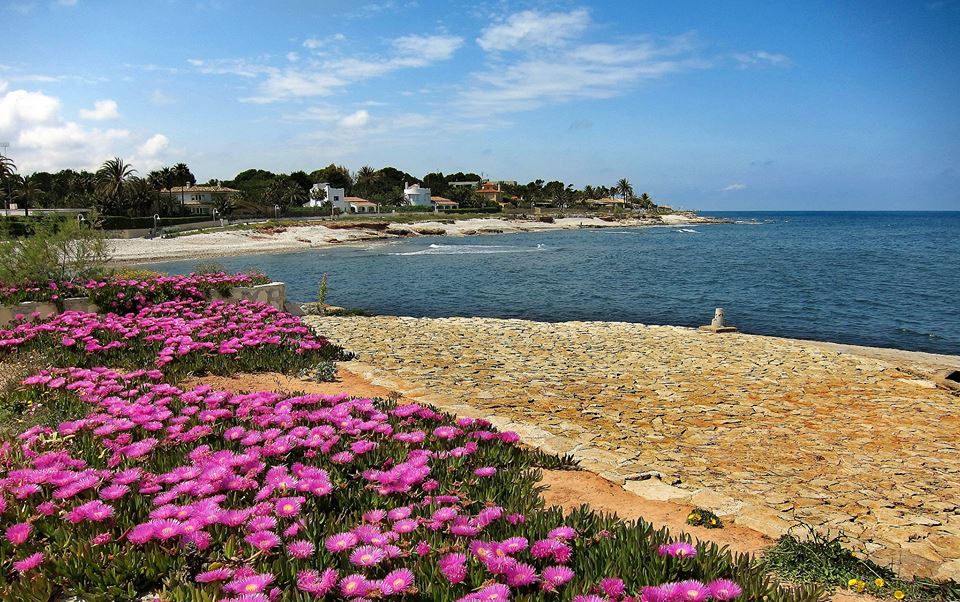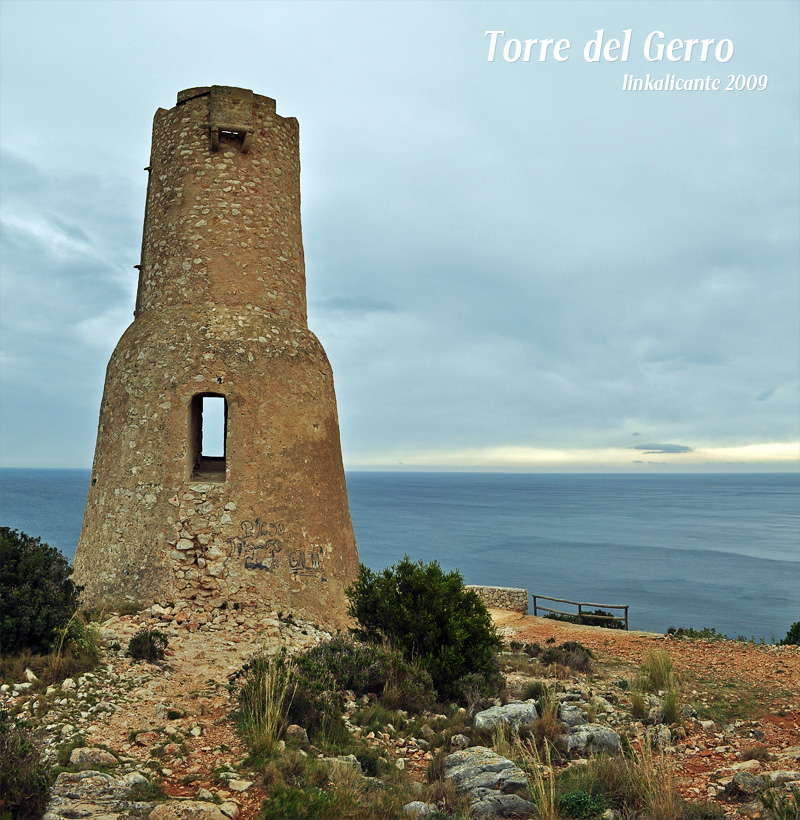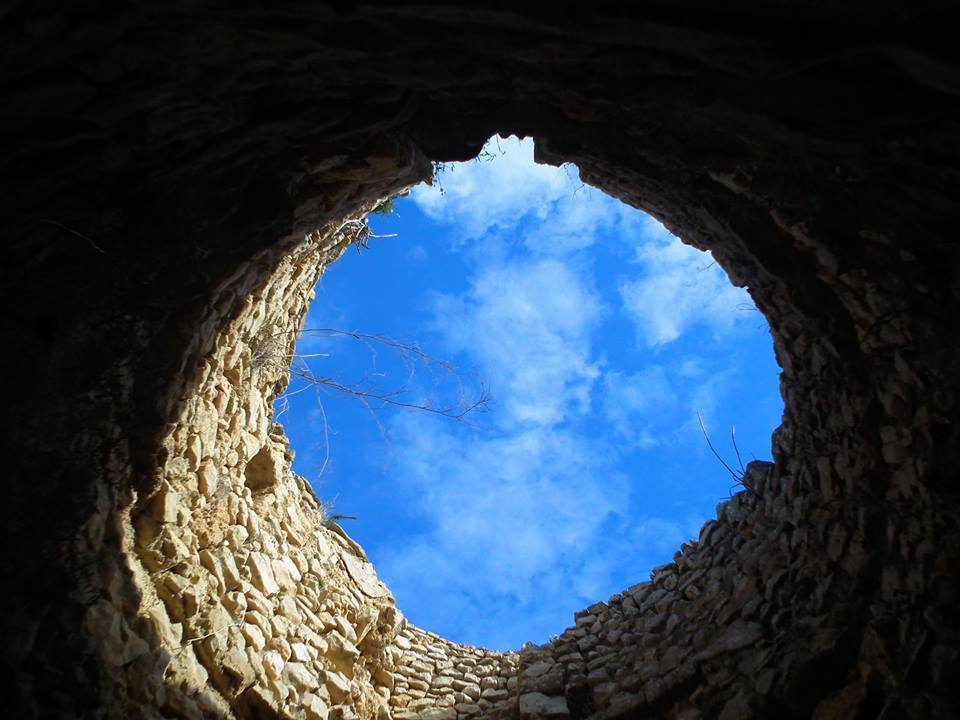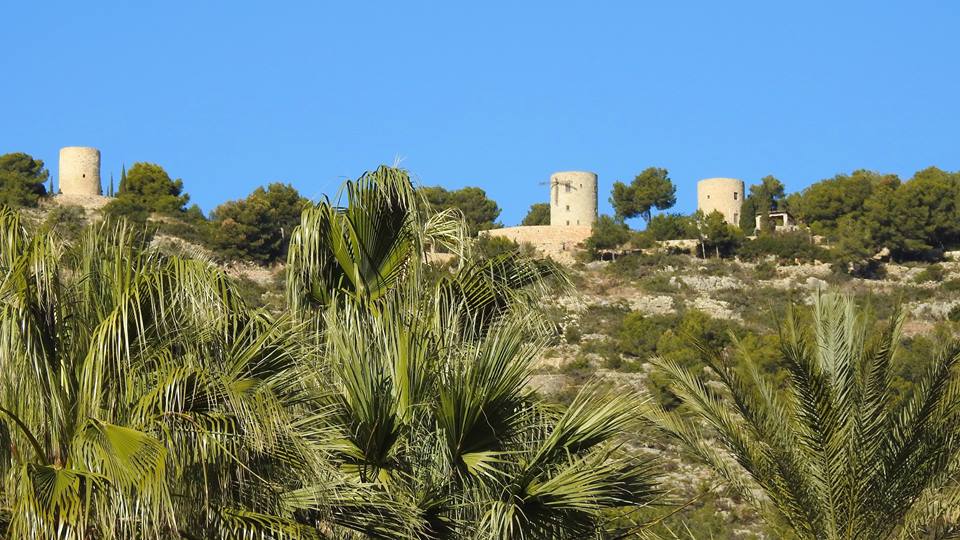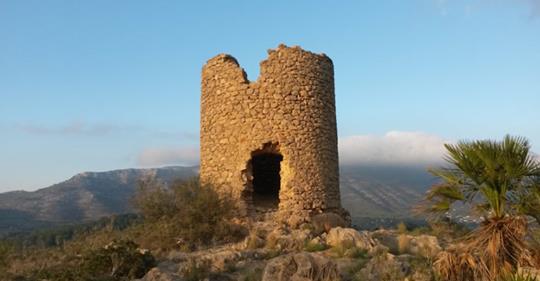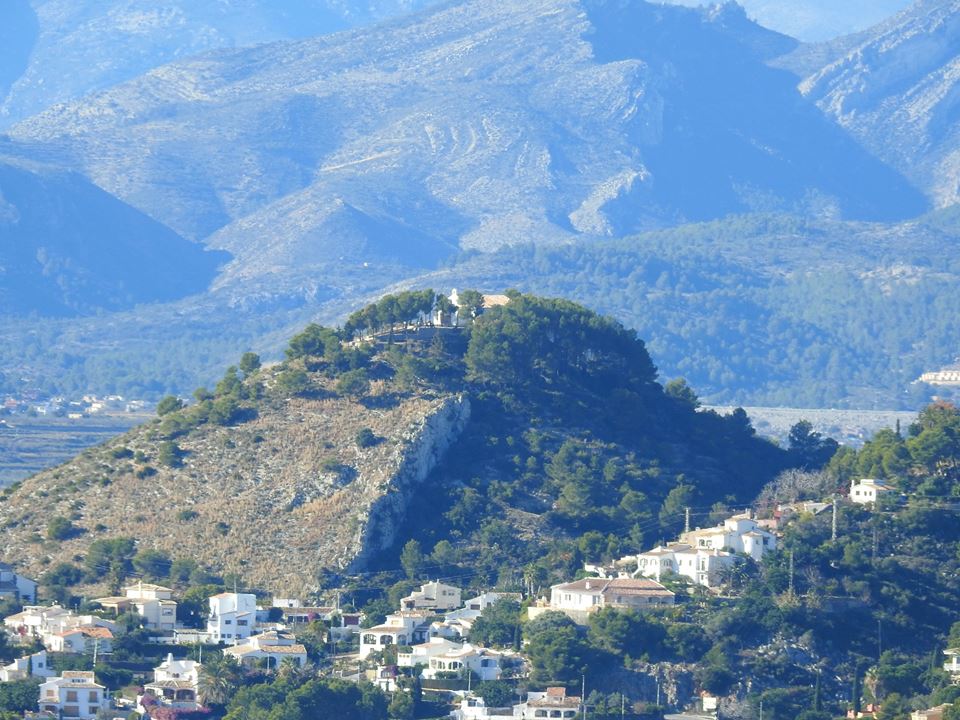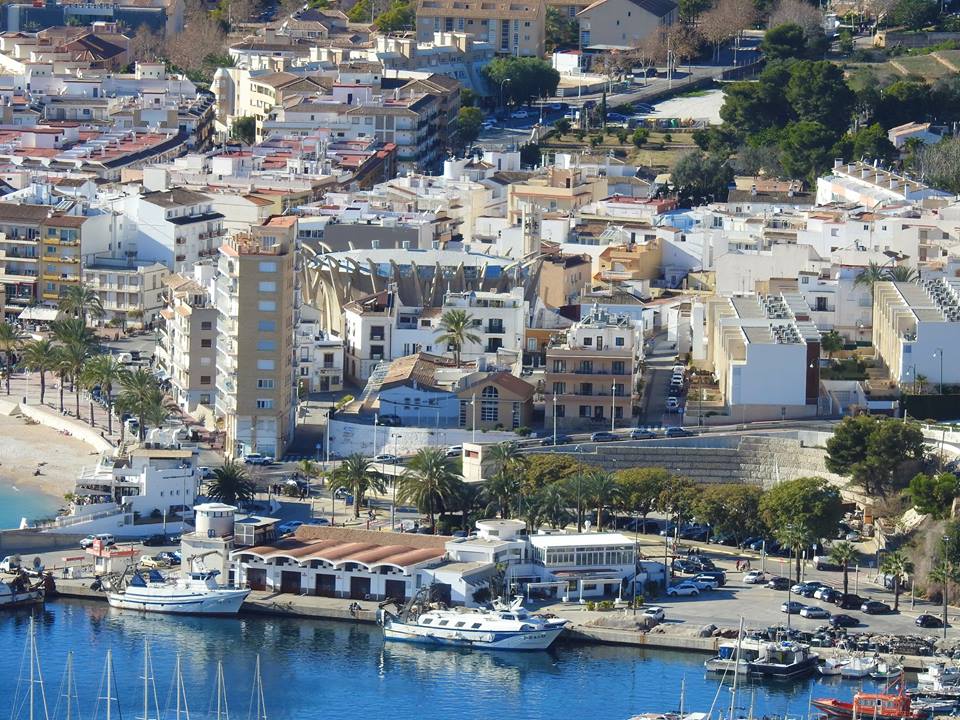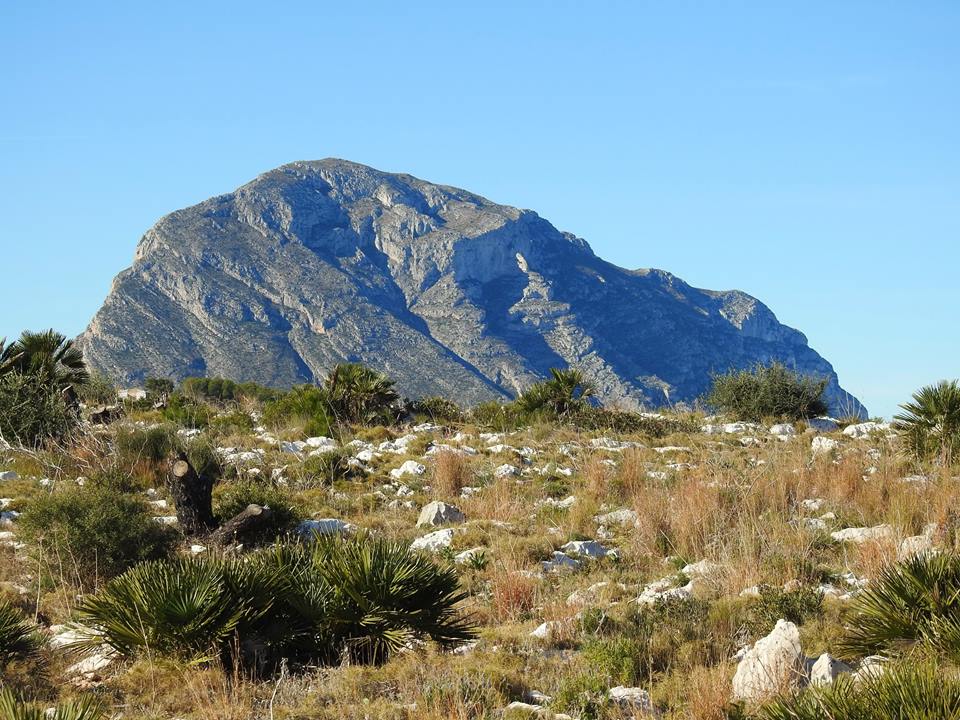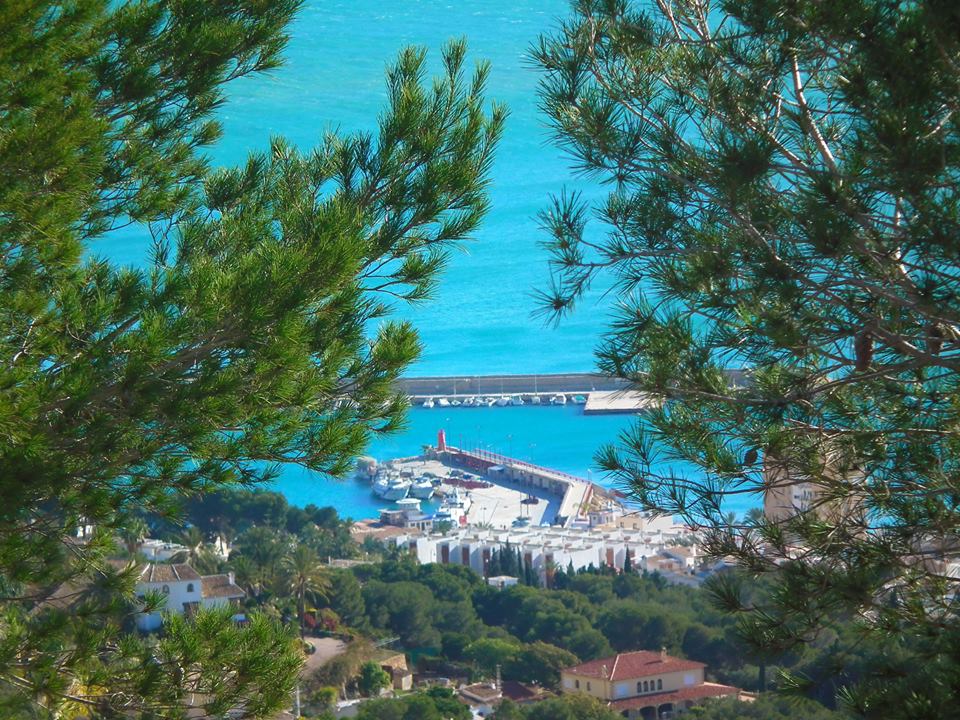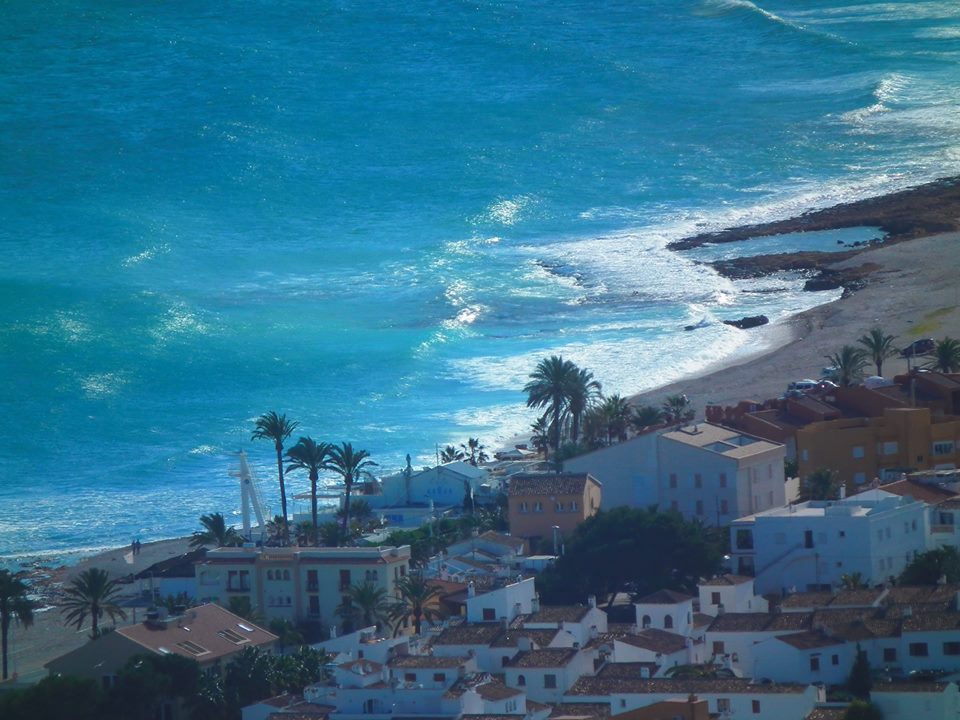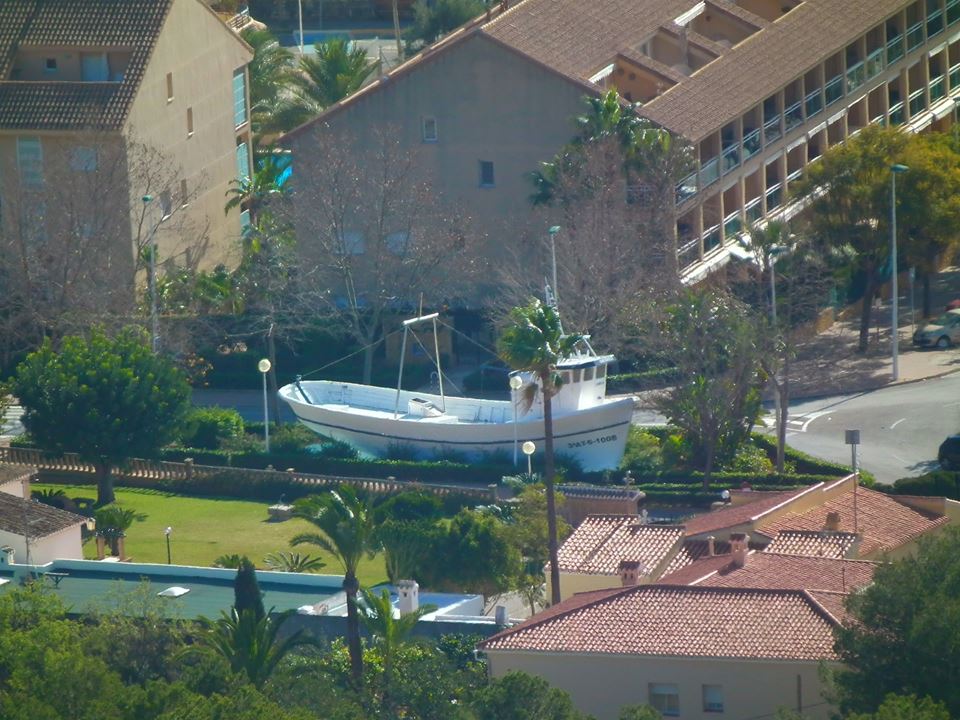Les Rotes (Dénia) to Molins de Les Planes – Port de Javea
Distance: 8.8 km (one way)
- Height 184 m
- Duration: Around 3 hours
- Difficulty: Medium
For this route (connecting Dénia and Javea) , includes a stop at the old windmills of Les Planes. Start start by taking the promenade located next to Marineta Cassiana beach. From there you will reach Les Rotes and continue walking south, finding several rocky stretches where the seabed hosts a wealth of flora and fauna.
Beach of Les Rotes.
At the end of the walk at Les Rotes, you will see the watchtower of El Gerro. The tower marks the end of the ascending stretch with the steepest slope.
The second stop is at Las Planes with its 13 mills, all built in the 14th century. The path there passes through areas of scrub, forest and old terraces of abandoned crops. The remains of these constructions are now devoid of blades and roofs but can still be observed in different levels of conservation. Today they are obviously no longer in use but these mills that used to grind wheat, incorporated hardy mechanisms of wood of kernel that moved the heavy circular stone wheels.
Els Molins de La Plana.
To finally descend to Javea port… from the fork you have to go down to Carrer dels Puig-Molins leaving behind you a water tank and a chalet. Continue on the left and at the first bend on C/Benigànim you will reach the Camí Vell de la Mar, from where you turn left until reaching a roundabout with a fishing boat on Avenida del Puerto. From there, go straight on C/ Cristo del Mar along to the promenade.
The views of Javea from the viewpoint of Els Molins.
Gallery photos by Linda Ferguson.
IN MARCH 2013……FIVE HISTORIC WINDMILLS BECOME MUNICIPAL ASSETS
Five windmills, specifically 1,2,3,7 and 8, have become municipal assets which will allow the council to initiate plans for protection and renovation. Often mistaken for watch-towers or even castles, these historic buildings have sat on the ridge high above the town for several centuries, grinding wheat and other cereals that would have been grown in abundance across the region by taking advantage of the south-westerly wind called the Llebeig which still blows almost constantly across the high plain. But it is only during a recent review of documentation that the council found that they did not appear as municipal assets. Therefore, the Department of Heritage, under the direction of Councillor Antonio Miragall, began a discrete process to have the property properly attributed as such and this has been successfully completed.
A RARE SNOW COVERED VIEW

